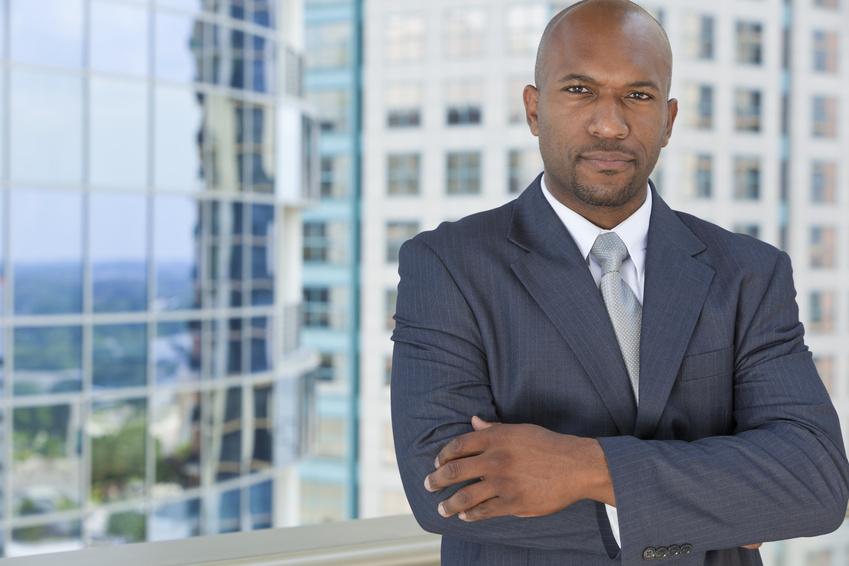Example 3 - Creating a Culture of Proactive Strategic Management
Examples of the Change Agent Executive / Independent Coach Partnership
* All identifying information for each individual and their business in these examples has been changed to assure anonymity. Any similarity between these examples and someone you may know is an indication that these experiences and situations are not that uncommon.
Precipitants to Engaging an Executive Coach

© spotmatikphoto / Fotolia
Philippe was promoted from within to become CEO after the Board of Directors had carefully scrutinized a number of internal and external candidates. The previous CEO had been brought in from the outside to stabilize the businesses in this multinational research and technology-driven company after several businesses had experienced gut wrenching changes in the previous years. Using this planned retirement, the Board now wanted someone with a continuity of experience deep within the company who could truly reassess the company's core strengths and uncover what could be become essential weaknesses as the world economy began to devolve into recession. The right CEO would address both the emerging performance challenges as well as find opportunities for future growth in the midst of the downturn.
Philippe had previously managed one of the ten major business units of the company, located in the US. The outgoing top HR executive recognized that Philippe's ascension to CEO was not just a huge step up in span of control, but represented a qualitative shift to a role that required thoughtful and balanced influence of a shifting mosaic of external customers, stakeholders, politicians, and regulators. From having coached several officers in the company, I was a known quantity to the top HR executive and he suggested my involvement to the CEO. At the conclusion of my introductory meeting with Philippe, Philippe decided that he "did not want to make this transition alone" and he engaged me to coach him even before his first day as CEO.
Situational Analysis and Executive Development Assessment

© spotmatikphoto / Fotolia
While the Board and many stakeholders expect the CEO to get his or her arms around the business as soon as possible, many of the first 100 day expectations are typically unrealistic. Past research3 suggests that a common experience of a new senior general manager is that he or she enters the job with a set of perceptions and hypotheses to test, expecting that they will successfully create traction in changing the business and improving the business' performance in the first four to six months. What they find, instead, is that the changes that they thought would be easy are hard, some of the hard changes are easy, and the root causes for the organization's inertia and resistance to change are not as apparent as they first thought. With this realization, the general manager will have completed the first of three typical "waves of change."
The "Second Wave" of change involves engaging many of the key internal stakeholders (supplemented by external consultants) in conducting root cause analyses of the resistances to change with the intent of finding the fewest levers that will make the greatest difference in performance, designing the changes necessary to pull or create those levers, and implementing the necessary changes in a planned and thoughtful way. This Second Wave represents the period of the largest and most disruptive changes for a key general manager. The Second Wave typically begins by the third quarter of his or her tenure as general manager and may continue for the next eighteen months, two years, or more. Usually by the fifth quarter, the Board and key external stakeholders expect to see the new CEO's fingerprints on a coherent plan of action to improve the business.4 Upon completion of the Second Wave, the Third Wave is a period of incremental refinement of the institutionalized changes that have been implemented before the next cycle of major change begins. Philippe and I partnered together for the First Wave of change and through the beginning of the Second Wave.
We began by holding a series of top executive team offsite meetings to assess the current state of the multiple businesses. This also gave Philippe an opportunity to assess the strategic management capabilities of each of the individuals on his team and their potential to also assist him as general management resources to assess and improvement the performance of the entire portfolio of businesses for the company.
Three major themes emerged out of our individual coaching sessions:
1. Philippe needed to define the priority issues that only he as CEO could be involved in and delegate or deflect the rest.
After the first 100 days, Philippe admitted that he was amazed at how many moving parts were in front of him. While he was trying to sort out which parts of his initial assessment of the businesses were apparently not fully accurate during the First Wave, he needed to start defining which issues really required his personal involvement and which ones could be delegated to others. Otherwise, he risked becoming overwhelmed. This was difficult because it required Philippe giving up involvement in some areas which he really enjoyed. The need to set priorities was blatantly obvious. Establishing the right set of priorities and the means to deflect the involvement of stakeholders without their feeling dismissed was more subtle and required coached diplomacy.
2. For each business strategy, there was no "Plan B."
The multiple business strategies had gone largely unchallenged over the last years of the previous CEO's tenure. The polished PowerPoint presentations for each strategy had beautiful logical flows and internal consistencies. Each strategy was reified as a beautifully painted portrait of the business. However, the implicit senior executive team culture historically assumed a mutual pact that "if I don't challenge your business plan, you won't challenge mine." No one questioned if Mona Lisa's intriguing smile was due to self-consciousness about bad teeth.

© spotmatikphoto / Fotolia
Each strategy was based on a set of assumptions about the larger business environment, customers, competitors, suppliers, the available internal talent, and the business' ability to perform. Probabilistic decision making experts suggest that responsible decision-makers assign a probability to each assumption, that it will hold true in the time frame of the strategy. When this is done, it often becomes apparent that many business strategies are based on some very weak assumptions. Assuming the current company was no exception, the question Philippe was coached to ask was "At what point do these assumptions no longer hold up and when do we have to shift to a 'Plan B?' " The responses were, "this is 'the' strategy, there is no Plan B." There was no scenario planning, and the world was changing rapidly in unexpected ways.
3. Some of the top executive team members were probably not capable of strategically managing the company in the emerging competitive environment.
The downturn in the economy, softening and shifting demands from customers, increased competition, the introduction of new competitors encroaching from related industries, and an unsustainable cost structure required that each senior executive take a steely-eyed, fresh view of their own business and the entire company business portfolio. The company was largely internally focused and looking at the businesses through legacy lenses and benchmarks. It took the hiring of an external top HR executive to realize that while the company offered only average cash compensation, it had quietly created gold-plated benefits and retirement packages that could no longer be justified. The total remuneration package would hobble the company in the near future, and the team needed to take something away from the employees to correct this.

© microcozm / Fotolia
In addition, new business ventures and legacy businesses had been allowed to languish on the promise that they would improve at some vague time in the future. Much to the past chagrin of the Board, there were often no exit strategies. No major project had ever been killed, which would require someone to admit a failure and a loss.
In another unpleasant surprise, Philippe and I determined that the executive in charge of global expansion had no prior international experience, had only US-centric research management experience, had currently developed only potential joint ventures and prospects in Asia that had not generated any strategic returns yet, and was viewed privately by some executives as a "tourist" who had relocated with his wife to a lovely location in Asia. This was an apparent reward for loyalty to a previous CEO. He was also well-liked by a key Board member.
Other executives were running their operations in largely reactive modes, internally focused and not anticipating emerging issues until they were on their doorstep. There were few preemptive strikes or efforts to head off a problem before it could become a force that had to be dealt with.
The Individual Development Plan
We first focused on identifying the top priorities for Philippe's attention. I suggested Philippe work with his team to develop an executive business dashboard that he could monitor on a frequent basis, with clear accountabilities, KPIs, and milestones. Philippe identified more than 30 major items to be included on this dashboard. This dashboard became a foundation for proactively setting the focus and cadence for his management and Board of Director meetings.

© spotmatikphoto / Fotolia
Each business unit head was required to revisit the assumptions behind their respective business strategies and also serve on business strategy "challenge teams" for other business unit heads. Philippe would then lead the reviews with the entire team and model the typical frameworks and questions of strategic management that the other executive needed to address.
Philippe also met privately with each executive to discuss his expectations for how they would deliver on their respective area of responsibilities as well as contribute to the performance of the top management team. These discussions included Philippe delegating responsibilities to others as part of his effort to focus on his own priorities and deflect other issues to his team for them to handle.
Outcomes
Because Philippe could clearly lay out a transparent and coherent map and game plan for how he intended to review and analyze the portfolio of businesses in full recognition of the internal and external challenges they were facing, the Board of Directors became more confident in Philippe and gradually allowed him to largely determine the Board's agenda, involvement , and cadence. He accomplished early wins and used these success stories as an opportunity to showcase other change agents deeper in the company to the Board. The Board evolved into a role serving as both a body of oversight and governance as well as source of important external consultation and guidance.

© spotmatikphoto / Fotolia
The portfolio of businesses and projects was rationalized over time as nonperforming projects or ventures were terminated, sold, licensed, or retired when it was apparent that they would not likely otherwise create value for the business.
After one year, several key executives were replaced when it became apparent to Philippe (and, in some cases, to themselves) that they were not capable of either managing their portfolio of products and services in an effective and responsible way, could not adjust their business strategies to changing external and internal circumstances, could not contribute to the larger strategic management of the entire enterprise, or could not manage the required near term changes to produce timely results.
Exit strategies and scenario plans were developed, and in some cases executed, for the most vulnerable business strategies.
The cost structure was gradually adjusted to better align with external competitive realities and the needs of the business to generate enough margin to invest in future sources of technological competitive advantage for this research and technology company.
Once Philippe had reestablished his leadership team with the right talent, the right priorities, and the right strategic management processes, the coaching came to a completion. The coaching process occurred over a span of approximately eighteen months.
Related links:
Example 1. Discovering That Only You and Your Boss Have Defined the Situation as Requiring a "Turnaround"
Recommendations for Engaging a Seasoned Executive Coach to Help You Successfully Lead Significant Change
###
Wiznami Corp. is an a senior executive coaching service based in Naples, Florida.

